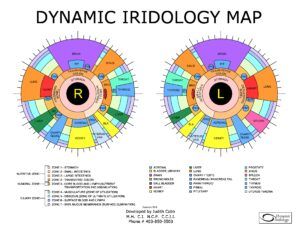The Origins of Iridology
How Iridology Came to Be - Its Evolution
Iridology has been used as an assessment tool for centuries. It has its roots in Egypt, India, China, and Greece.
In modern times, interest in understanding if the eyes could be helpful in assessing health, and what they might tell us, started with the curiosity of a boy in Hungary. Ignatz Von Peczely (1822-1911) was just 11 years old when he had a close encounter with an owl that made him wonder if markings he saw in the owl’s irides had any correlation to its health.
Von Peczely went on to become a medical doctor. He created the first map of iridology by correlating markings in his patients’ eyes with their symptoms. As he continued to research he noted that some people had markings but did not have any of the symptoms he had already correlated to the marking. This troubled him, but he kept researching.
Pastor Nils Liljequist (1851-1936), in Stockholm, Sweden, studied the irides of his parishioners. He believed the eyes changed color in response to medication, and that the fiber structure and density of the iris, be it tight or loose, gave indications of how resilient or not a person’s health was.
We now know that irides do not change color due to medications, and that Liljequist was correct about fiber structure and density correlating to a person’s ability to resist illness.
Another pastor, Emmanuel Felke (1856-1926), in Kladen, Germany, studied both theology and medicine. He developed an iridology map and laid the framework outlining the constitutions.
Rudolph Schnabel (1882-1952) of Cologne, Germany, was one of the first iridologists to examine the iris using a microscope. His studies focused on iris pigmentation and pupil tonus. Of learning iridology, he said, “It was no easy task and those who believe or would like to believe that handling iridoscopy [iridology] can be learned within a few weeks or even days are mistaken and do a disservice to a good cause.”
Two more German researchers, Joseph Angerer (1907-1994) and Joseph Deck (1914-1992), who collaborated together, moved iridology forward even further.
Joseph Angerer was a student of Rudolph Schnabel.
Joseph Angerer was a naturopath and teacher of naturopathy and iridology. He had high standards, and knowing that many students were accepting everything they read as being accurate, he refused to publish any of his findings until they had been vetted by his professional peers.
Other iridology researchers in the 1900s include Dorothy Hall, Toni Miller, Henry Lahn, M.D., Henry Lindlahr, M.D., D.O., and Bernard Jensen, D.C., N.D., Ph.D.
Constitutional Iridology started to come to life in North America in the late 1970s, thanks to Harri Wolfe and Bill Caradonna. Harri is an American-born German. Both Bill and Harri studied iridology with Jensen, but Harri also read an iridology text written by the German iridologist, Joseph Deck. He recognized that some of what he had learned from Jensen - things like eye colors can change as a result of medications or diet, and healing fibers appear in irides as the body gets healthier - were not correct.
Harri and Bill started teaching this ‘new’ German iridology. They realized that with the wide array of iridology information - some accurate, some not - there needed to be a way to standardize teachings and qualifications. In answer to this, they created the National Iridology Research Association (now known as the International Iridology Practitioners Association) and set standards for curriculum and the examination process. The designation of Comprehensive Iridologist signifies someone who has met the standards set forth by IIPA.
And the best part? Research is still going on and iridology is still evolving!

